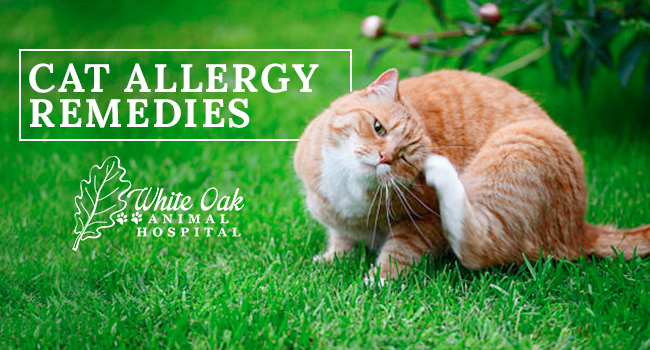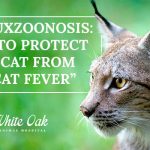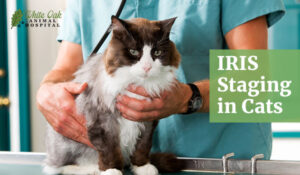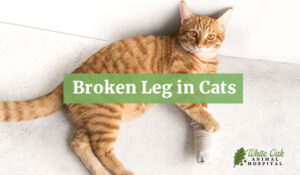
Cat allergy remedies exist to treat a number of allergens.
However, knowing the source of your cat’s allergies helps you find the most effective treatment.
If your cat is allergic to pollen, for example, the pollen itself does not harm the cat.
Your cat’s body senses an attack and releases white blood cells, stimulating a histamine release.
Histamines dilate capillaries, releasing fluid from blood vessels.
The affected area becomes hot, swollen and itchy.
Pet parents can treat allergies with antihistamines like Benadryl or steroids like Prednisone. Milder allergies may benefit from natural remedies or a combination of Eastern and Western medicine.
Learning the cause helps you find the best cat allergy remedies.
What Causes Cat Allergies?
Like people, cats experience a variety of possible allergies.
These commonly include respiratory, skin and food allergies.
By communicating your cat’s symptoms with your vet, you can discover the cause of your cat’s allergies.
Once you treat the cause, you can find the most effective cat allergy remedies.
Breathing Allergens And Asthma
A study published in Environmental Science and Technology shows how indoor chemicals harm house cats.
The study, from Stockholm University, reveals how high levels of brominated flame retardants (BFRs) found in household dust negatively affects cats.
Previous studies show higher concentrations of BFRs found in the blood of cats with hyperthyroidism.
Consumers have BFRs in their home by way of textiles, furniture and electronic equipment. Companies use the chemicals to prevent materials from igniting.
BFRs leach from products even after years of use, becoming part of household dust.
Common indoor allergens include dust mites, mold, and cigarette smoke, and cleaning chemicals.
A good way to avoid indoor allergens is to open your windows often, utilize air filters, vacuum and dust frequently.
Wash your cat’s bedding in hot water every week.
For asthmatic cats with allergies, focus on preventing a broncho-constrictive crisis.
In asthmatic cats, exposure to an otherwise harmless environmental aero-allergens allows for production of allergen specific IgE antibodies.
For example, mold can cause a cat’s body to produce IgE antibodies.
The antibodies bind to cells on respiratory mucosal surfaces. Upon re-exposure to the allergen, IgE binds to the allergen. This causes mast cell degranulation, leading to a variety of allergic reactions causing breathing problems.
When this happens chronically, permanent changes in the lung occur. Once there are permanent changes, bronchodilator drugs cannot completely reverse clinical signs in a crisis.
To prevent both acute and chronic clinical signs, asthma treatment must focus on inflammation prevention.
Food Allergens
Sometimes a plastic allergy presents as a food allergy.
If your cat eats out of a plastic bowl and presents with allergies around the mouth, switch to glass, metal or ceramic before changing their food.
Food allergies typically present as:
- Flaky, dry skin
- Diarrhea
- Weight loss
To find out if your cat’s symptoms are related to food allergies, try a hypoallergenic diet. This may be difficult because cats are picky eaters.
A hypoallergenic diet consists of a single protein source your cat has never eaten before, without additives or preservatives.
Consider trying:
- All turkey or chicken
- Lamb baby food
- Baby food rice cereal
Feeding your cat this diet for four weeks won’t cause nutritional deficiency and it’s important to find the underlying cause of the allergy.
If your cat experiences relief from symptoms on this diet, use a prepackaged limited ingredient diet or make your own cat food.
Skin And Flea Allergens
Cats who lick and scratch their skin often have skin allergies.
Allergic cats will lick their groin and the base of the tail.
Untreated, cats will lick until the fur is gone or sores develop.
Cats with severe allergies may present with small, pus-filled bumps around the neck and head, or all over the body.
Allergic cats may also have greasy fur with sticky patchy spots.
Sometimes they develop secondary ear infections, causing ear discharge and odor.
Fleas are one of the most common causes of allergic skin reactions in cats. A good flea control product can eliminate many skin allergies.
Additionally, coconut oil works both internally and externally to treat cat allergies. Internally, coconut oil helps a cat’s digestive system better absorb commercial cat food. Add a small spoonful of coconut oil to each feeding.
Externally, coconut oil treats ear mites, mange, and the symptoms of dry, itchy skin. Coconut oil’s antioxidant properties soothe allergic sores and broken skin. You don’t have to worry if your cat licks coconut oil off his fur or skin.
Coconut oil is also antibacterial and anti-fungal, preventing bacterial and fungal infections.
You can reduce common outdoor allergens like fleas, mites, pollen, grass, and mold by rinsing your cat’s feet after coming inside. Also keep your cat indoors when the allergen count is high, especially during the spring and fall.
More Powerful Cat Allergy Remedies
There are many quick and easy changes you can make at home to help you give your cat an edge on easing allergy challenges.
- Learn more about cat allergies.
- Switch to a Limited Ingredient Cat Food Recipe. PET | TAO’s Limited Ingredient Cat Food Recipe is naturally low in foods that stimulate an allergic response.
- Supplement with medicinal mushrooms. PET | TAO’s Complement Immune Mushroom Blend eases inflammatory response and ease allergy symptoms.
- Try digestive enzymes and probiotics. PET | TAO’s Harmonize GI boosts gut health and combats food allergens.
- Feed Freeze Dried Lung Treats. According to TCVM, Lung is on the same meridian as the skin. Therefore, lung treats help both breathing and skin allergies. Lung treats support lung and skin similar to a glandular supplement in a “like treats like” fashion.
- Learn more about TCVM Herbal Remedies. Chinese medicine offers many amazing natural solutions for cat allergies Some good examples are:
Related Posts
-
What Every Pet Owner Should Know About Pet Allergies
Whether human or pet, allergies usually prove to be a complicated, and sometimes frustrating, topic.…
-
The Best Way to Get Rid of Cat Allergies Naturally
Would You Like to Know How to Get Rid of Cat Allergies Naturally? Like people,…
-
Feline House Soiling and What You Can Do
Behavior problems, house soiling especially, can be one of the most frustrating topics to deal…
-
Cytauxzoonosis: How to Protect Your Cat From "Bobcat Fever"
Could Your Cat Get Cytauxzoonosis or Bobcat Fever? Unfortunately, the chances of your cat…









